-
 Bitcoin
Bitcoin $118400
0.47% -
 Ethereum
Ethereum $3836
2.20% -
 XRP
XRP $3.157
2.98% -
 Tether USDt
Tether USDt $0.9999
-0.03% -
 BNB
BNB $801.5
1.31% -
 Solana
Solana $180.9
2.07% -
 USDC
USDC $0.9999
-0.02% -
 Dogecoin
Dogecoin $0.2225
2.50% -
 TRON
TRON $0.3285
-1.02% -
 Cardano
Cardano $0.7789
2.60% -
 Hyperliquid
Hyperliquid $43.60
2.39% -
 Sui
Sui $3.892
4.41% -
 Stellar
Stellar $0.4229
3.34% -
 Chainlink
Chainlink $18.01
3.98% -
 Hedera
Hedera $0.2745
6.77% -
 Bitcoin Cash
Bitcoin Cash $582.3
3.38% -
 Avalanche
Avalanche $23.77
1.04% -
 Ethena USDe
Ethena USDe $1.001
0.01% -
 Toncoin
Toncoin $3.493
3.59% -
 Litecoin
Litecoin $110.0
2.48% -
 UNUS SED LEO
UNUS SED LEO $8.936
-0.37% -
 Shiba Inu
Shiba Inu $0.00001304
2.49% -
 Uniswap
Uniswap $9.999
1.09% -
 Polkadot
Polkadot $3.897
3.26% -
 Monero
Monero $308.6
-0.83% -
 Dai
Dai $0.9999
-0.01% -
 Bitget Token
Bitget Token $4.504
-0.04% -
 Pepe
Pepe $0.00001154
2.95% -
 Cronos
Cronos $0.1471
3.06% -
 Ethena
Ethena $0.6691
19.53%
Rising channel lower rail support + Yang line reverses to Yin line buy point
A rising channel’s lower rail acts as dynamic support; when price bounces with a Yang-to-Yin reversal and bullish confirmation, it signals a high-probability long entry.
Jul 30, 2025 at 10:14 am
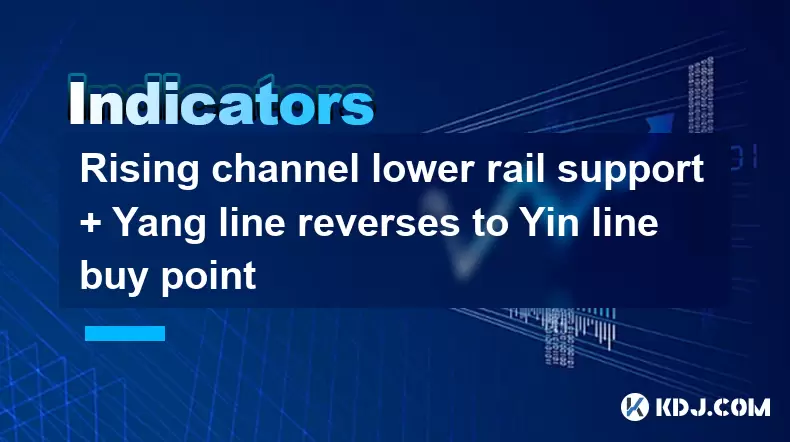
Understanding the Rising Channel in Cryptocurrency Trading
In technical analysis, a rising channel is a bullish formation defined by two parallel upward-sloping trendlines. The lower trendline connects a series of higher lows, while the upper trendline connects higher highs. This structure reflects consistent buying pressure and indicates that the asset is in an uptrend. Traders use the rising channel to identify potential support and resistance zones. The lower rail of the rising channel acts as dynamic support, meaning price often bounces off it before continuing upward. When price touches or slightly pierces this lower boundary and then reverses, it can signal a continuation of the uptrend. The integrity of the lower rail is critical — a clean bounce increases the probability of a valid trade setup.
Identifying the Lower Rail as Support
To confirm the lower rail support, traders must first draw the rising channel accurately. This requires at least two confirmed higher lows to establish the lower trendline. The more times price respects this line, the stronger the support. When price approaches the lower rail, look for signs of rejection, such as long lower wicks, bullish engulfing candles, or increased volume on the bounce. It is essential that the price does not close significantly below the lower rail, as this may indicate a breakdown. A valid touch should show price reacting near or slightly below the line before reversing upward. This reaction confirms the support's strength and sets the stage for potential entry signals, especially when combined with candlestick patterns.
Interpreting the Yang to Yin Candlestick Reversal
Candlestick patterns provide insight into market sentiment. A Yang line (white or green candle) indicates bullish momentum, where closing price is higher than opening price. A Yin line (black or red candle) reflects bearish pressure, with closing price below opening price. A reversal from a Yang to Yin line within a rising channel, especially near the lower rail, suggests a temporary shift in momentum. However, if this Yin candle appears after a bullish move and forms near support, it may represent profit-taking rather than a trend reversal. The key is context: if the Yin candle is small and followed by a strong bullish candle, it could be a reversal confirmation. Traders should watch for the body size, wick length, and volume to assess the strength of the reversal signal.
Combining Lower Rail Support with Yang-Yin Reversal for Entry
When the lower rail support coincides with a Yang to Yin line reversal, it forms a high-probability buy setup. The sequence unfolds as follows:
- Price approaches the lower boundary of the rising channel.
- A green (Yang) candle shows continued bullish momentum into the support zone.
- The next candle closes red (Yin), suggesting short-term selling pressure.
- However, the Yin candle does not break far below the support and ideally forms a long lower wick.
- Volume on the Yin candle is not significantly higher than previous candles, indicating lack of strong bearish conviction.
- The following candle breaks above the high of the Yin candle, confirming bullish resumption.
This pattern suggests that bears attempted to push price down but were overwhelmed by buyers at support. The reversal from Yang to Yin and back to bullish momentum acts as a trap for short sellers and a signal for long entries.
Step-by-Step Execution of the Buy Signal
To execute a trade based on this setup, follow these steps:
- Confirm the rising channel is valid with at least two touchpoints on both upper and lower rails.
- Wait for price to approach the lower rail support with precision, ideally within 1-2% of the line.
- Observe the candle immediately preceding the potential reversal — it should be a Yang (green) candle.
- The next candle should close as a Yin (red) candle, preferably with a long lower wick indicating rejection.
- Ensure the Yin candle does not close more than 1% below the lower rail; deeper closes may invalidate support.
- Place a buy order above the high of the Yin candle to confirm bullish momentum has returned.
- Set a stop-loss just below the low of the Yin candle or slightly under the lower rail to manage risk.
- Target the upper rail of the channel as the initial take-profit zone.
- Adjust position size based on stop distance to maintain consistent risk per trade (e.g., 1-2% of capital).
This method ensures entries are based on confluence — both structural support and price action confirmation.
Volume and Confirmation Indicators
Volume plays a crucial role in validating this setup. A Yin candle with low volume on the reversal suggests weak selling pressure, increasing the likelihood of a bullish continuation. Conversely, a high-volume red candle may indicate strong distribution and a potential breakdown. Traders can use volume profile or on-balance volume (OBV) to assess buying interest. Additional confirmation can come from oscillators like the Relative Strength Index (RSI). If RSI is above 50 and bounces from 40-50, it supports bullish momentum. Moving averages, such as the 20-period EMA, sloping upward and acting as dynamic support, further strengthen the setup. These tools do not replace price action but enhance confidence in the trade.
Frequently Asked Questions
What if the Yin candle completely engulfs the previous Yang candle?
An engulfing Yin candle after a Yang candle near support can be bearish, but context matters. If it occurs at the lower rail and shows a long lower wick with declining volume, it may still represent a shakeout. However, if the engulfing candle closes deep below the Yang candle and breaks the lower rail, the setup is invalidated.
Can this strategy be applied on different timeframes?
Yes, the rising channel and Yang-Yin reversal pattern can be used on any timeframe. On higher timeframes like 4-hour or daily, the signals are more reliable due to reduced noise. On lower timeframes like 5-minute, more false signals may occur, requiring tighter confirmation.
How do I differentiate between a pullback and a trend reversal at the lower rail?
A pullback respects the lower rail with minor touches and quick reversals. A reversal is confirmed if price closes below the lower rail for two consecutive candles and the channel slope flattens or turns downward. Volume and momentum indicators help distinguish between the two.
Should I enter before or after the confirmation candle closes?
Always wait for the confirmation candle to close above the Yin candle’s high. Entering prematurely risks false signals. Patience ensures the market has demonstrated renewed bullish intent before committing capital.
Disclaimer:info@kdj.com
The information provided is not trading advice. kdj.com does not assume any responsibility for any investments made based on the information provided in this article. Cryptocurrencies are highly volatile and it is highly recommended that you invest with caution after thorough research!
If you believe that the content used on this website infringes your copyright, please contact us immediately (info@kdj.com) and we will delete it promptly.
- Ozak AI: Can This Underdog Crypto Achieve a Bull Run to $1?
- 2025-07-31 22:30:12
- Coinbase Breach: Navigating Insider Risk and Bolstering Security
- 2025-07-31 23:11:55
- Bitcoin Rebounds, WeWake Presale Gains Traction: What's the Buzz?
- 2025-07-31 22:30:12
- Bitcoin, Altcoins, and Volume Watchlists: Decoding the Crypto Landscape
- 2025-07-31 23:11:55
- Tron, Fartcoin, and BlockchainFX: What's Trending (and What's Not) in the Crypto World
- 2025-07-31 21:32:19
- Bitcoin, Corporate Investments, and Sustainability: A New Era or Fleeting Fad?
- 2025-07-31 20:50:14
Related knowledge

How can you use the MACD histogram to determine trend strength?
Jul 31,2025 at 11:10pm
Understanding the MACD Histogram and Its ComponentsThe MACD (Moving Average Convergence Divergence) histogram is a visual representation of the differ...
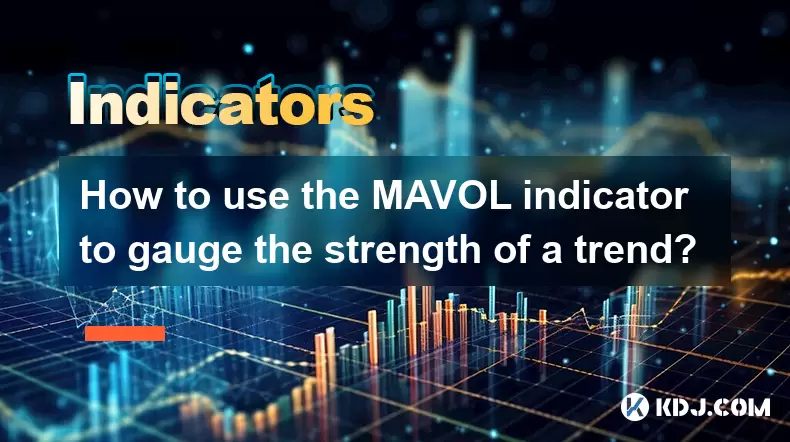
How to use the MAVOL indicator to gauge the strength of a trend?
Jul 31,2025 at 09:57pm
Understanding the MAVOL Indicator in Cryptocurrency TradingThe MAVOL indicator, short for Moving Average of Volume, is a technical analysis tool widel...
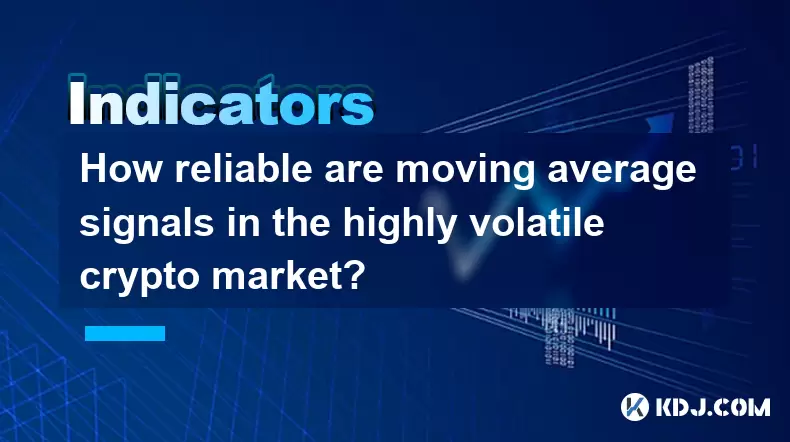
How reliable are moving average signals in the highly volatile crypto market?
Jul 31,2025 at 08:36pm
Understanding Moving Averages in Cryptocurrency TradingMoving averages (MAs) are among the most widely used technical indicators in the cryptocurrency...
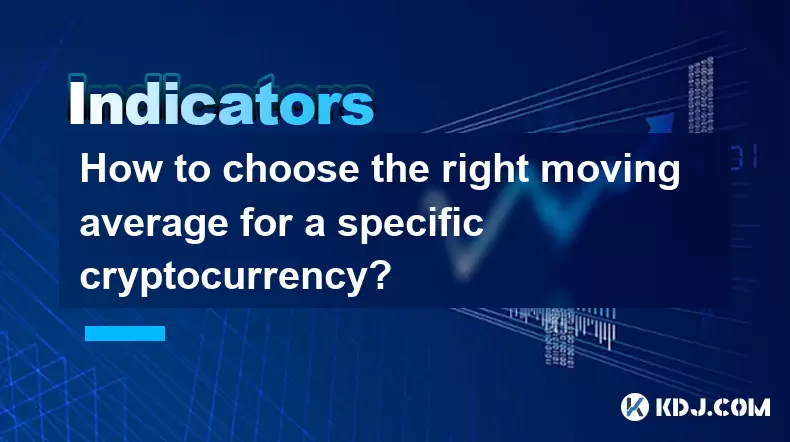
How to choose the right moving average for a specific cryptocurrency?
Jul 31,2025 at 10:29pm
Understanding the Role of Moving Averages in Cryptocurrency TradingMoving averages are foundational tools in technical analysis, widely used by crypto...
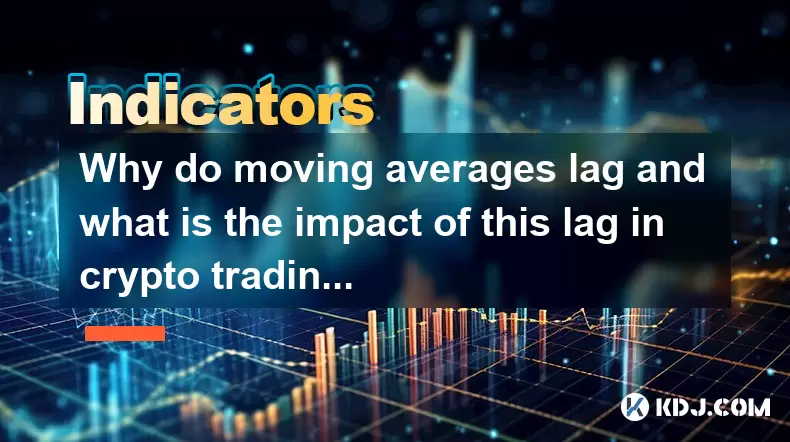
Why do moving averages lag and what is the impact of this lag in crypto trading?
Jul 31,2025 at 08:07pm
Understanding the Concept of Moving Averages in Crypto TradingMoving averages are among the most widely used technical indicators in cryptocurrency tr...
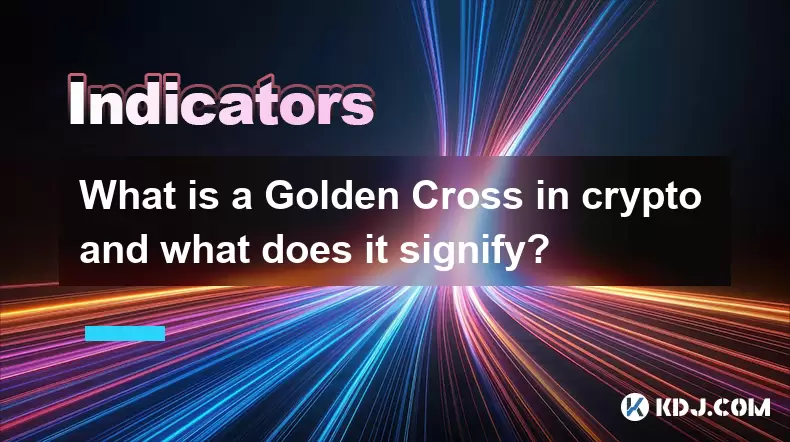
What is a Golden Cross in crypto and what does it signify?
Jul 31,2025 at 10:36pm
Understanding the Golden Cross in Cryptocurrency MarketsThe Golden Cross is a technical analysis pattern widely observed in cryptocurrency trading. It...

How can you use the MACD histogram to determine trend strength?
Jul 31,2025 at 11:10pm
Understanding the MACD Histogram and Its ComponentsThe MACD (Moving Average Convergence Divergence) histogram is a visual representation of the differ...

How to use the MAVOL indicator to gauge the strength of a trend?
Jul 31,2025 at 09:57pm
Understanding the MAVOL Indicator in Cryptocurrency TradingThe MAVOL indicator, short for Moving Average of Volume, is a technical analysis tool widel...

How reliable are moving average signals in the highly volatile crypto market?
Jul 31,2025 at 08:36pm
Understanding Moving Averages in Cryptocurrency TradingMoving averages (MAs) are among the most widely used technical indicators in the cryptocurrency...

How to choose the right moving average for a specific cryptocurrency?
Jul 31,2025 at 10:29pm
Understanding the Role of Moving Averages in Cryptocurrency TradingMoving averages are foundational tools in technical analysis, widely used by crypto...

Why do moving averages lag and what is the impact of this lag in crypto trading?
Jul 31,2025 at 08:07pm
Understanding the Concept of Moving Averages in Crypto TradingMoving averages are among the most widely used technical indicators in cryptocurrency tr...

What is a Golden Cross in crypto and what does it signify?
Jul 31,2025 at 10:36pm
Understanding the Golden Cross in Cryptocurrency MarketsThe Golden Cross is a technical analysis pattern widely observed in cryptocurrency trading. It...
See all articles

























































































